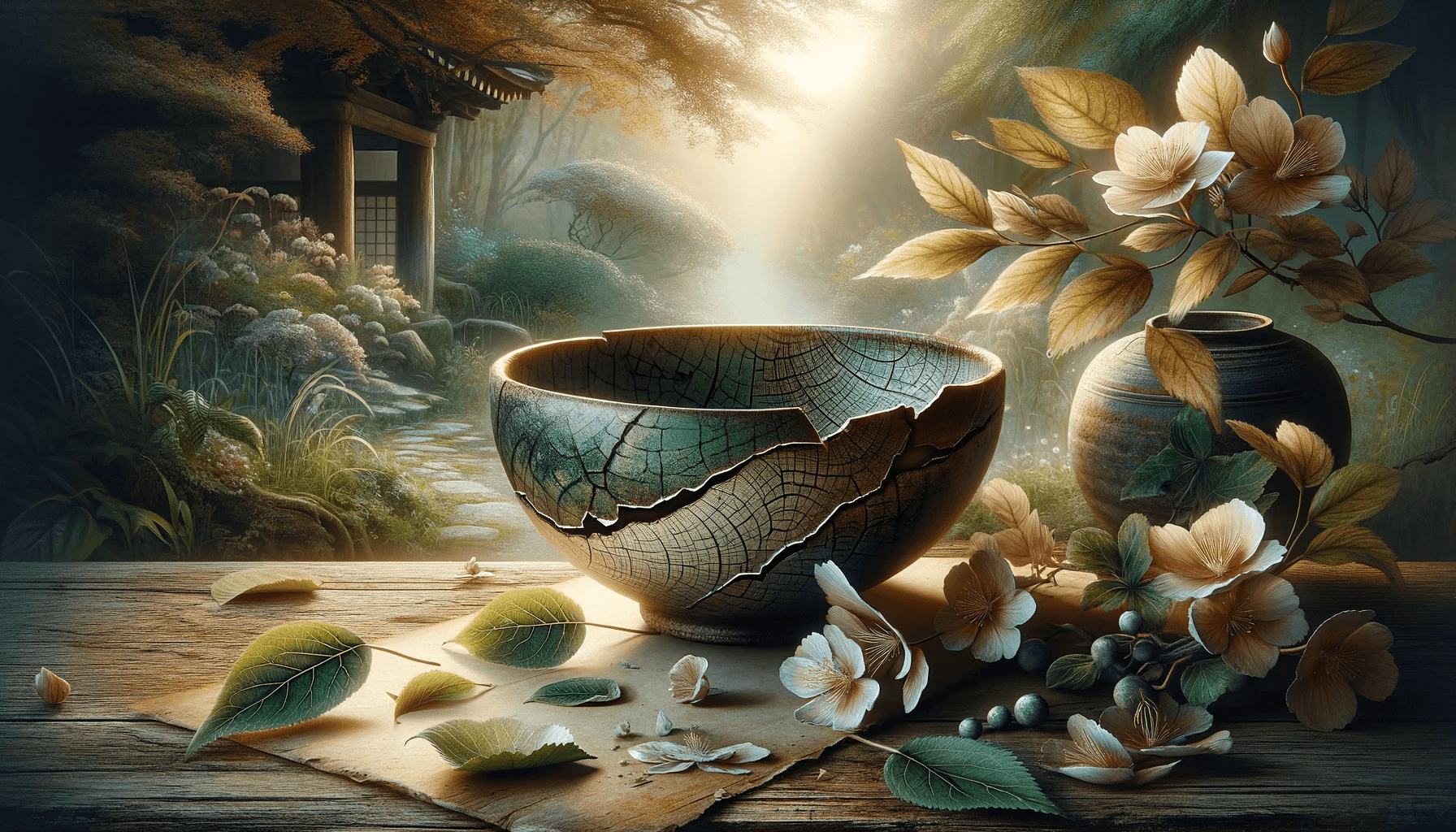Sponsored By Awaken Your Great Self
Table of Contents
Introduction to Wabi-Sabi
In a world that often values perfection and flawlessness, the Japanese philosophy of Wabi-Sabi offers a refreshing perspective. Wabi-Sabi is the art of finding beauty in imperfections and embracing the natural cycle of growth, decay, and death. It encourages us to appreciate life’s simple, imperfect, and transient nature. This ancient philosophy has its roots in Zen Buddhism and has influenced various aspects of Japanese culture, from art and design to everyday life.
Understanding the concept of imperfections
At its core, Wabi-Sabi celebrates the beauty of imperfections. It recognizes that nothing is permanent and everything undergoes change and decay. In a world where we often strive for perfection, Wabi-Sabi encourages us to embrace the imperfect and find beauty in the flaws. Whether it’s a crack in a ceramic bowl, a weathered wooden door, or the wrinkles on our faces, these imperfections tell a story and add character to our lives.
The history and origins of Wabi-Sabi
To truly understand Wabi-Sabi, it is essential to delve into its history and origins. The term “Wabi-Sabi” emerged in the 15th century, during the Muromachi period in Japan. It was initially associated with the tea ceremony and the aesthetic principles of simplicity, humility, and the appreciation of imperfections. Over time, Wabi-Sabi evolved into a broader philosophy that permeated various aspects of Japanese culture, including art, architecture, and design.
Wabi-Sabi in art and design
Wabi-Sabi has had a profound influence on Japanese art and design. Traditional Japanese paintings often depict the simplicity and beauty of nature, capturing the essence of Wabi-Sabi. In pottery, “Kintsugi” exemplifies Wabi-Sabi by embracing the beauty of broken objects. Instead of discarding a shattered ceramic piece, it is repaired with gold, highlighting the cracks and imperfections. This practice extends the object’s life and adds a unique aesthetic value.
How to incorporate Wabi-Sabi in your home
Incorporating Wabi-Sabi into your home can create a serene and harmonious environment. Start by decluttering and simplifying your space. Remove unnecessary items and create open, breathable spaces. Embrace natural materials like wood, stone, and linen, as they embody the essence of Wabi-Sabi. Choose furniture and decor that have a weathered or aged appearance, allowing the passage of time to add character to your surroundings. Emphasize the beauty of imperfections by displaying handmade crafts or imperfect pottery.
Wabi-Sabi in everyday life
Wabi-Sabi extends beyond the physical environment and can be applied to everyday life. Embrace the impermanence of things and let go of attachments. Find joy in life’s simple pleasures, like a warm cup of tea or a walk in nature. Practice mindfulness and be fully present in each moment, appreciating the beauty surrounding you. Cultivate a sense of gratitude for the imperfections that make life unique and meaningful.
Embracing imperfections and finding beauty in simplicity
Wabi-Sabi encourages us to embrace imperfections and find beauty in simplicity. Instead of constantly striving for perfection, it invites us to accept ourselves and others as we are. Embracing imperfections allows us to let go of the unnecessary pressure to be flawless and opens the door to self-acceptance and self-love. By finding beauty in simplicity, we can free ourselves from constantly pursuing material possessions and focus on what truly brings us joy and fulfillment.
Wabi-Sabi mindfulness and living in the present moment
Mindfulness plays a crucial role in the practice of Wabi-Sabi. By living in the present moment, we can fully appreciate the beauty of impermanent things. When fully present, we can notice the intricate details of our surroundings, the changing seasons, and the fleeting moments that make life rich and meaningful. Mindfulness allows us to cultivate a deeper connection with ourselves and the world, leading to greater peace and contentment.
Wabi-Sabi and sustainability
Wabi-Sabi aligns closely with the principles of sustainability. By appreciating the beauty of imperfections, we can reduce our consumption and waste. Instead of constantly chasing the latest trends and discarding perfectly functional items, Wabi-Sabi encourages us to cherish what we have and make the most of it. It promotes using natural materials and emphasizes the value of craftsmanship and longevity. We can contribute to a more sustainable future by adopting a Wabi-Sabi mindset.
Conclusion and final thoughts on embracing Wabi-Sabi
Wabi-Sabi offers a gentle reminder to slow down, appreciate imperfections, and find beauty in simplicity in a world that often values perfection and the constant pursuit of more. It teaches us to embrace the transient nature of life and let go of attachments. Incorporating Wabi-Sabi into our homes and everyday lives can cultivate a more profound sense of peace, contentment, and gratitude. So, take a moment to pause, look around, and discover the elegance in imperfections.
CTA: Embrace the beauty of imperfections and discover the elegance of Wabi-Sabi in your own life. Start by incorporating Wabi-Sabi principles into your home and daily routine. Slow down, simplify, and find joy in the present moment. Experience the transformative power of Wabi-Sabi and embrace the imperfections that make life truly beautiful.




